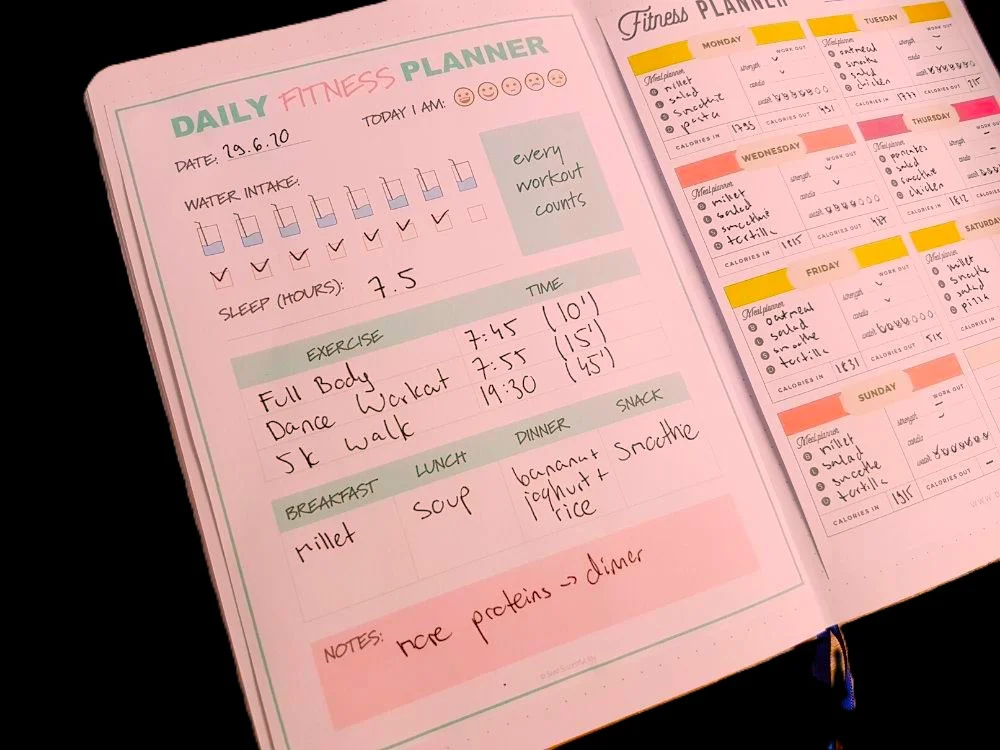Table of Contents
TogglePotential of Selling Journal on Amazon in 2024
Selling journals on Amazon in 2024 presents an exciting opportunity, especially with the platform’s massive reach. Amazon is a great marketplace and even 60% of the sales come from independent sellers. Here’s a quick breakdown covering the costs, Amazon fees, potential profit, and key aspects to consider.
Costing
Creating a journal involves several production costs, primarily design, printing, and binding. Depending on the quality and customizations, the cost per unit may range from $2 to $6 for basic journals. If you’re designing digital journals (print-on-demand), platforms like KDP (Kindle Direct Publishing) allow you to avoid upfront inventory costs by printing each journal only when sold.
Amazon Fees
Selling on Amazon incurs several fees, including a referral fee (usually around 15% of the selling price) and a closing fee, especially if you use Amazon’s Fulfilled by Amazon (FBA) service. FBA fees cover warehousing, packing, and shipping, often adding between $2 and $5 per journal, depending on weight and dimensions. For a journal sold at $15, Amazon’s cut could range from $3 to $5.
Final Profit
With total expenses (production and Amazon fees) averaging around $5 to $10 per journal, your profit margin could sit between $5 and $10 for each sale, assuming a $15 selling price. Selling at higher price points or reducing production costs (e.g., buying in bulk) can boost profitability further.
Market Potential and Scalability
Amazon’s vast marketplace means sellers can reach millions of buyers worldwide, and journals cater to a broad audience. With careful market research, a unique design approach, and effective keyword use, it’s possible to create a steady stream of income from journal sales. You can further increase revenue through seasonal designs, themed journals, or niche-specific branding to attract dedicated audiences.
Choosing Your Journal Niche according to your Audience
Gratitude Journal

Gratitude journals are crafted for those who want to focus on mindfulness and well-being. They often include daily or weekly prompts encouraging users to reflect on positive aspects of their day, promoting a sense of calm and gratitude. Ideal for individuals looking to foster a positive mindset.
- Price: $15
- Profit: $10
- Example Product: The Five-Minute Journal
Bullet Journal

: Bullet journals appeal to organized, creative people who like a flexible approach to planning. With dotted or blank pages, users can personalize layouts, track habits, set goals, and document thoughts. These journals provide a creative outlet while keeping users on track with their tasks.
- Price: $20
- Profit: $13
- Example Product: Leuchtturm1917 Bullet Journal
Fitness Journal

Fitness journals are targeted toward health enthusiasts who wish to track workouts, nutrition, and progress. These journals help users stay accountable to their goals, offering sections for daily exercises, meal plans, and personal achievements, making them ideal for committed fitness lovers.
- Price: $18
- Profit: $12
- Example Product: Fitbook by Fitlosophy
Travel Journal

Travel journals cater to adventure-seekers who want a place to document their journeys. With sections for planning, writing about experiences, and storing memories, they are perfect for people who value reflection and capturing moments while exploring new places.
- Price: $17
- Cost: $5
- Example Product: Moleskine Voyageur Travel Journal
Self-Care Journal

Self-care journals are designed for those interested in personal growth and mental health. These journals include prompts and sections for tracking emotions, setting self-care goals, and reflecting on well-being. They encourage users to prioritize mental wellness, making them popular among mindfulness audiences.
- Price: $19
- Profit: $13
- Example Product: InnerGuide Self-Care Planner
Designing the Journal Cover and Engaging Interior Pages
Designing an appealing journal cover and engaging interior pages is key to attracting buyers and ensuring a positive user experience. For the cover, choose a design that aligns with the journal’s theme and target audience, such as calming colors for wellness journals or vibrant patterns for creative types.
High-quality images, a clear title, and an aesthetically pleasing layout make the cover inviting. Consider using elements like matte or glossy finishes and embossing for a more premium feel.
For the interior, ensure that pages are not overly cluttered but provide structure—such as prompts, headers, or grids—relevant to the journal’s purpose. Effective use of font, spacing, and simple illustrations can enhance readability and engagement without overwhelming users.
Tailor the design elements (e.g., lined vs. blank pages, prompts, or habit-tracking sections) to match the unique needs of your audience.
Setting Up Your Amazon KDP Account
Setting up your Amazon Kindle Direct Publishing (KDP) account is straightforward and opens up opportunities to publish and sell journals directly to a large audience. Follow these steps to get started:
Create an Amazon Account: If you don’t already have one, register on Amazon. This will serve as the base for your KDP account.
Set Up Your KDP Account: Go to kdp.amazon.com and sign in using your Amazon credentials. You’ll need to provide tax information for royalty payments.
Provide Bank Details: Enter bank account information so you can receive payments for sales. Choose your preferred currency and payment method.
Understand KDP Guidelines: Review Amazon’s content and formatting guidelines to ensure your journal meets their standards. This includes avoiding copyrighted content and adhering to KDP’s size, file, and cover requirements.
Complete Tax Information: Amazon requires tax information for royalty processing. Non-U.S. publishers will need to complete a W-8BEN form.
Formatting and Uploading Your Journal to Amazon KDP
Formatting and uploading your journal to Amazon KDP involves several essential steps to ensure your book is professionally presented and compliant with Amazon’s guidelines.
Format Your Manuscript: Use software like Microsoft Word or Google Docs to create your journal layout. Use consistent fonts and margins, and remember to include necessary elements like page numbers, headers, or prompts if applicable.
Convert to PDF: Once your journal is formatted, export it as a PDF. This format preserves your layout and design, ensuring it appears as intended when printed.
Cover Design: Create an eye-catching cover using tools like Canva or Adobe InDesign. Your cover should be the correct size, including bleed specifications. KDP provides a cover template to help you with dimensions.
Upload to KDP: Log in to your KDP account and select “Create New Title.” Follow the prompts to enter your journal’s title, description, keywords, and author information. Upload your formatted manuscript and cover.
Preview Your Journal: Use the KDP Previewer tool to review how your journal will look in both digital and print formats. Make any necessary adjustments before finalizing your submission.
By following these steps, you can ensure that your journal is well-prepared for publication on Amazon KDP,
Promoting Your Journal on Social Media
Promoting your journal on social media is an effective way to reach your target audience and boost sales. Here are key strategies to maximize your impact:
Create Engaging Content: Use visually appealing images of your journal, including cover shots and interior pages, to grab attention. Share quotes or prompts from the journal that resonate with potential users. Use platforms like Instagram and Pinterest, which are visually driven, to showcase your product.
Utilize Hashtags: Research and include relevant hashtags to increase your visibility. For instance, use tags like #JournalPrompts, #SelfCare, or #BulletJournal, depending on your niche. This helps your posts reach a broader audience interested in similar content.
Leverage Influencer Collaborations: Partner with social media influencers who align with your journal’s theme. They can provide authentic reviews and help promote your journal to their followers, significantly expanding your reach.
Run Contests and Giveaways: Encourage engagement by hosting contests or giveaways where followers can win a free copy of your journal. This not only builds excitement but also encourages sharing, increasing your audience.
Engage with Your Audience: Respond to comments and messages promptly. Building a community around your journal fosters loyalty and encourages word-of-mouth promotion.
Choosing Between FBM and FBA for Journal

When deciding between Fulfillment by Amazon (FBA) and Fulfillment by Merchant (FBM) for selling your journal, consider the following factors to determine which method aligns best with your business goals:
Fulfillment by Amazon (FBA)
Convenience: FBA allows Amazon to handle storage, packing, shipping, and customer service, freeing you to focus on creating and marketing your journal.
Prime Eligibility: Products fulfilled through FBA are eligible for Amazon Prime, attracting a larger customer base who prefer quick shipping.
Amazon Fees: FBA incurs various fees, including a fulfillment fee (typically $2.50 to $5.00 per unit depending on size and weight) and monthly storage fees (around $0.75 per cubic foot for standard storage). These can significantly impact your profit margins, so it’s crucial to calculate how these fees affect your pricing strategy rust and Credibility: Many customers trust Amazon’s fulfillment process, which may lead to higher conversion rates.
Fulfillment by Merchant (FBM)
Cost Control: With FBM, you manage the entire fulfillment process, allowing for significant savings. For example, you can ship a journal for about $3-$5, depending on weight and shipping distance, compared to the FBA fees . This aves you greater flexibility in pricing your journal competitively.
Amazon Fees: FBM sellers pay referral fees, which are typically 15% of the sale price, but do not incur additional fulfillment fees, making it easier to manage costs .
Flexibility allows you to set your shipping times and methods, giving you more control over the customer experience and the ability to adapt quickly to market changes.
Personal Touch: You can add personal notes or branding elements to your shipments, creating a more engaging experience for your customers.
Managing Customer Reviews and Feedback
Managing customer reviews and feedback is essential for maintaining a positive reputation and improving your journal’s marketability. Start by actively monitoring reviews on your Amazon product page, as well as other platforms where your journal may be mentioned. Respond promptly to both positive and negative feedback, thanking customers for their insights and addressing any concerns they raise. This shows prospective buyers that you value customer input and are dedicated to improving their experience.
Encourage satisfied customers to leave reviews by following up after their purchase with a friendly message. Offer them an incentive, like a discount on future purchases, which can help boost the number of positive reviews.
Use constructive criticism to inform future journal designs or features. Analyzing feedback trends can provide valuable insights into customer preferences and expectations, enabling you to adapt your product line accordingly. By prioritizing customer engagement and feedback management, you enhance your brand’s credibility and foster loyalty among your audience.
Do Amazon Marketing or Hire an Amazon Consultant

When deciding between managing your own Amazon marketing or hiring an Amazon consultant, consider your expertise and resources. A well-designed Amazon Storefront can significantly enhance your brand’s visibility and customer engagement. This includes creating visually appealing layouts, highlighting featured products, and ensuring easy navigation.
Additionally, Amazon PPC (Pay-Per-Click) advertising can be complex but effective. It requires ongoing management to optimize campaigns, target the right keywords, and analyze performance metrics to maximize ROI.
Hire Ecomfleet to Skyrocket your Amazon sales
If you are unsure where to start or need expert help, consider reaching out to Ecomfleet. Our experienced consultants can help your coffee brand thrive in a competitive market. Let us handle the details so you can enjoy the rewards of your hard work.
Tracking Sales and Analyzing Performance
Tracking sales and analyzing performance on Amazon is crucial for understanding your journal’s success and optimizing your marketing strategies. Utilize Amazon’s Seller Central dashboard, which provides comprehensive data on sales volume, revenue, and customer engagement metrics. Pay attention to key performance indicators (KPIs) such as conversion rates and average order value to gauge the effectiveness of your product listings.
Additionally, consider leveraging tools like Amazon Brand Analytics to gain insights into customer behavior, including what products they view before making a purchase. Regularly reviewing these metrics allows you to make informed decisions about pricing, advertising, and inventory management.
Some Top Journal Sellers on Amazon
The 5-Minute Journal
This popular guided journal encourages users to focus on gratitude and personal growth. Each page includes prompts for daily reflections, making it perfect for those seeking a structured journaling experience.
- Price: Approximately $25.99.
Bullet Journal Notebook
Designed for versatility, this dotted grid notebook allows users to customize their journaling style, whether for planning, art, or note-taking. Its minimalist design appeals to creative individuals.
- Price: Around $12.99.
Self-Care Journal
This journal focuses on mental health and self-care practices, providing prompts and exercises to encourage mindfulness and well-being. It’s ideal for anyone looking to enhance their self-care routine.
- Price: Approximately $18.99.
Dream Journal
Aimed at dream enthusiasts, this journal provides dedicated space for recording dreams and insights. It includes prompts for interpreting dreams, making it suitable for those interested in exploring their subconscious.
- Price: About $14.99.
Creative Writing Journal
Tailored for aspiring writers, this journal features writing prompts and exercises to inspire creativity. It’s perfect for anyone looking to enhance their writing skills or start a new project.
- Price: Approximately $16.99.
Conclusion
Selling journals on Amazon offers a promising opportunity for entrepreneurs looking to tap into a growing market. By understanding the various aspects of the process—such as choosing the right niche, designing appealing covers, setting up your Amazon KDP account, and effectively promoting your product you can create a successful journal business. Continuous tracking of sales and customer feedback will help you refine your strategy, ensuring long-term success.
Frequently Asked Questions
What is the best way to market a journal on Amazon?
Effective marketing strategies include optimizing your product listing with relevant keywords, utilizing Amazon PPC advertising, and promoting on social media platforms. Additionally, consider influencer partnerships to reach wider audiences.
How much does it cost to sell a journal on Amazon?
Costs can vary depending on whether you choose FBA or FBM. With FBA, you’ll incur fulfillment fees (around $2.50 to $5.00 per unit) and storage fees. FBM involves shipping costs and a 15% referral fee on each sale.
What are the advantages of using Amazon KDP for selling journals?
Amazon KDP allows for easy self-publishing, offers access to a vast audience, and handles printing and shipping on demand. This eliminates the need for inventory management and upfront printing costs.
How can I encourage more customer reviews for my journal?
To increase reviews, follow up with customers via email thanking them for their purchase and kindly asking for feedback. You can also offer incentives, such as discounts on future purchases, to encourage customers to leave reviews.














